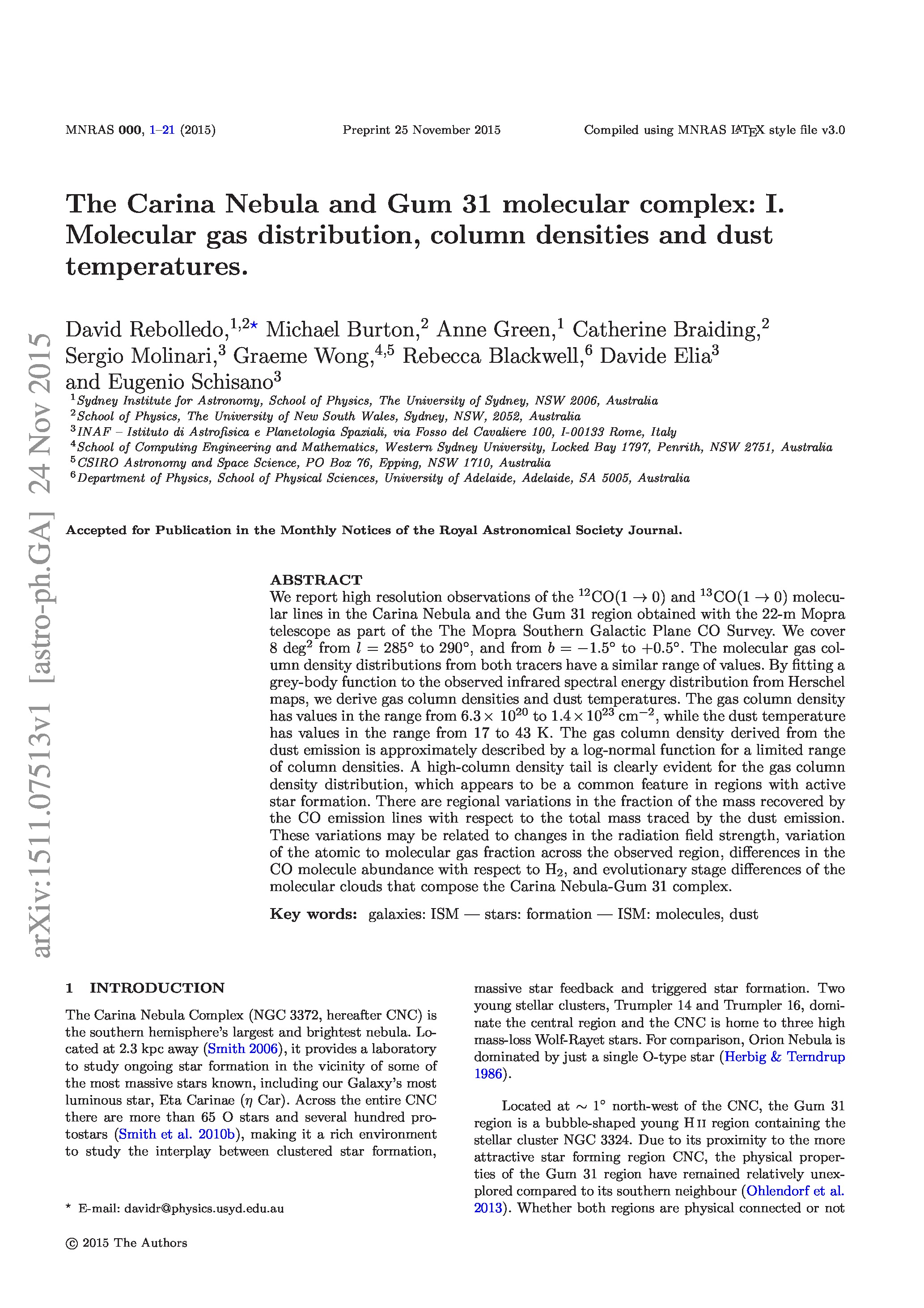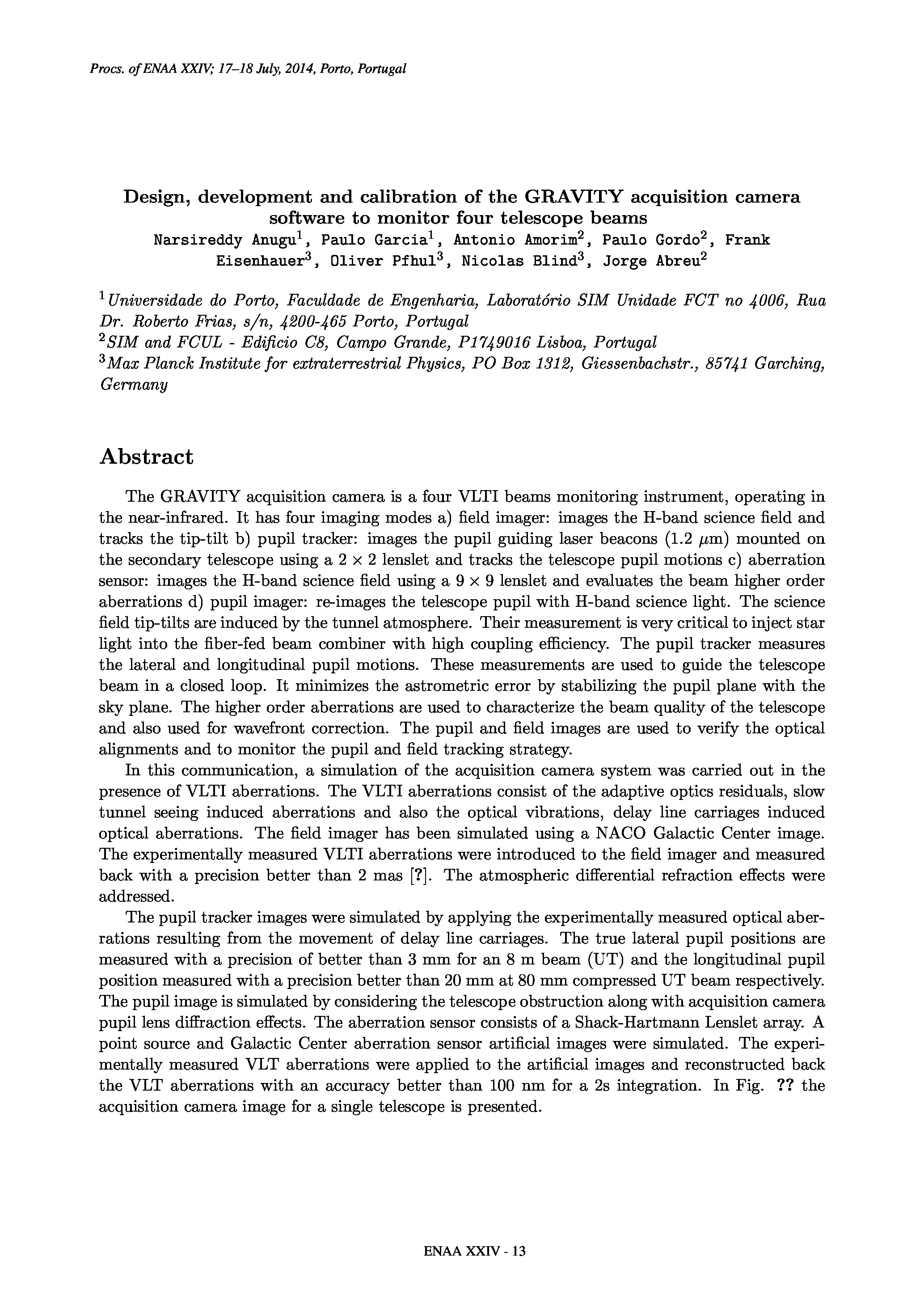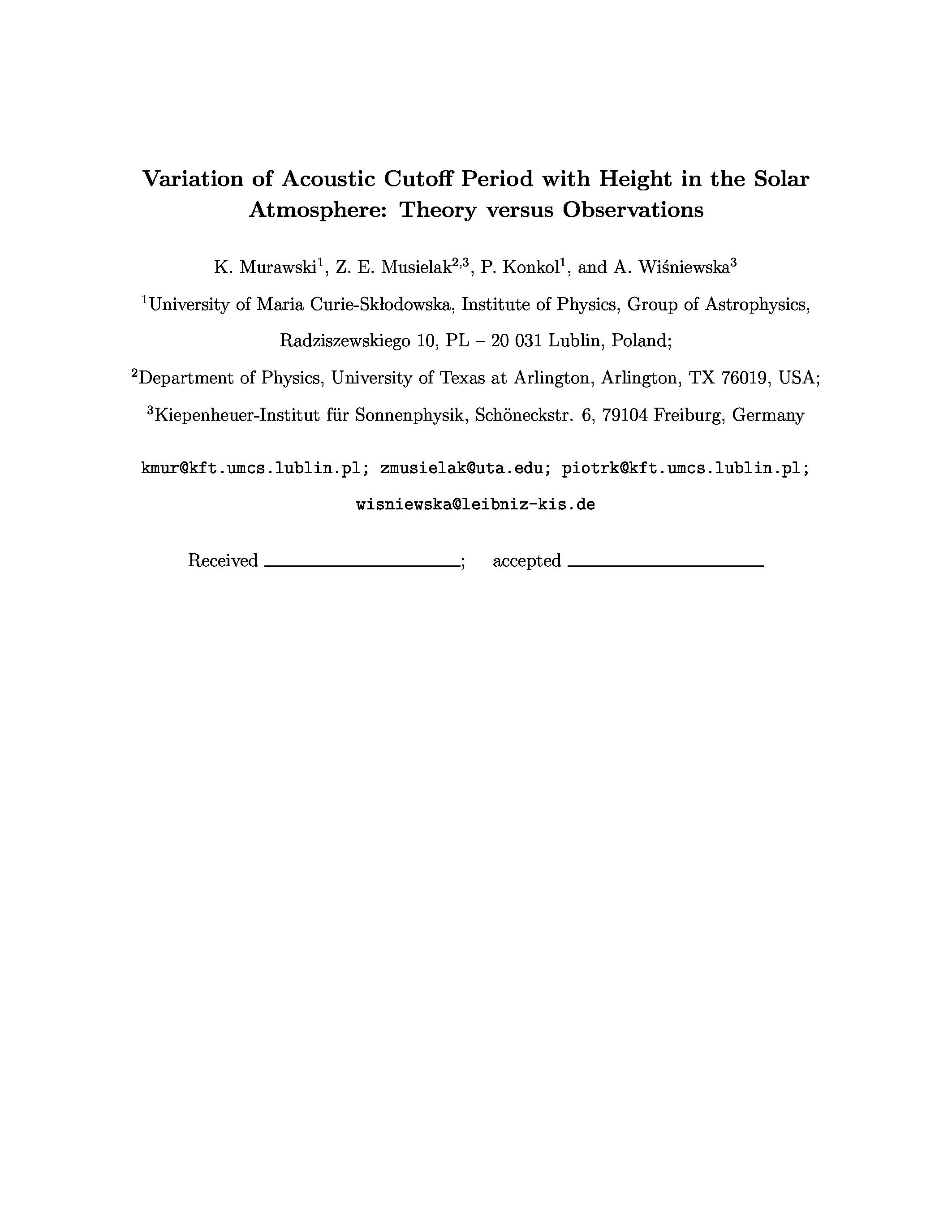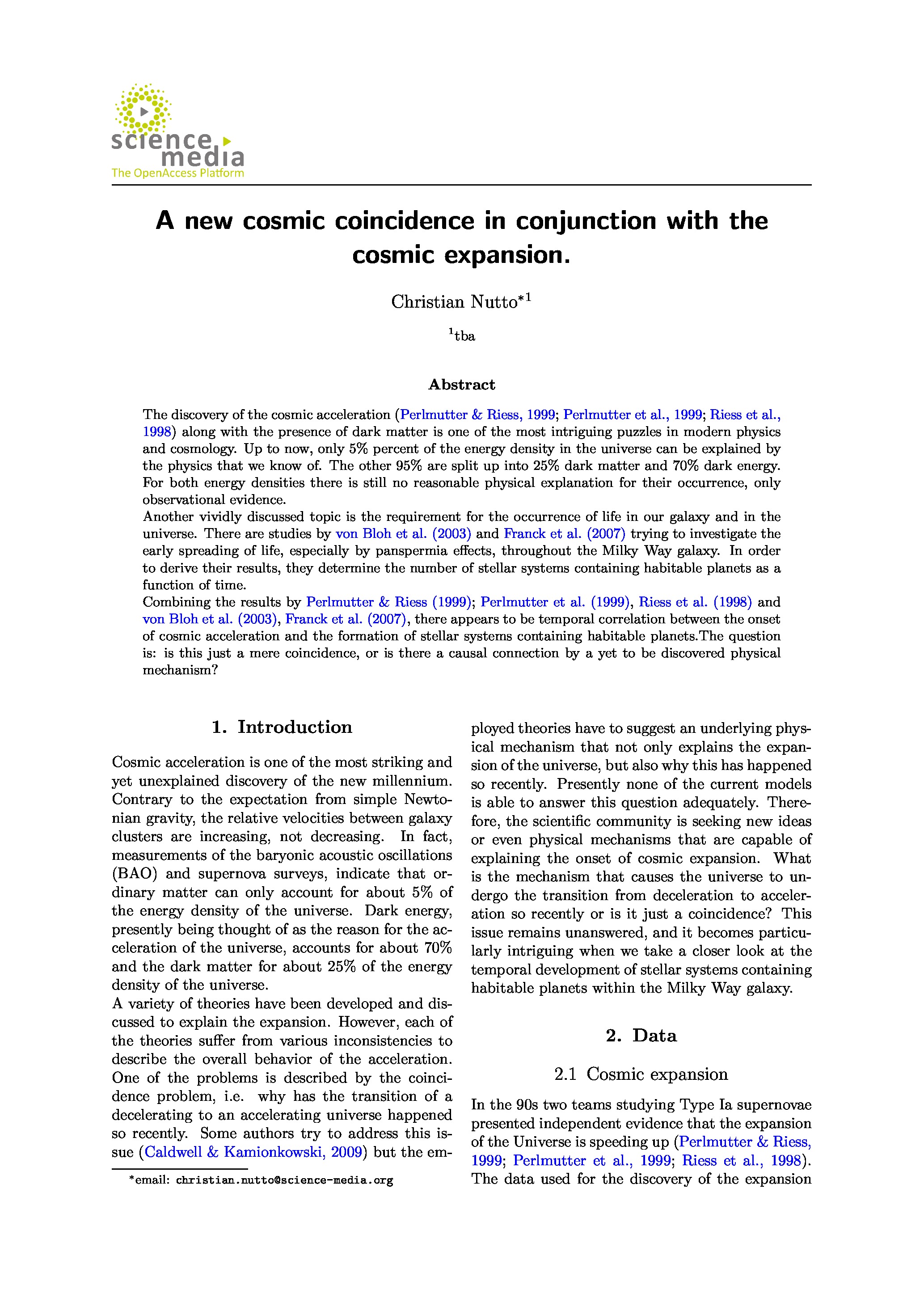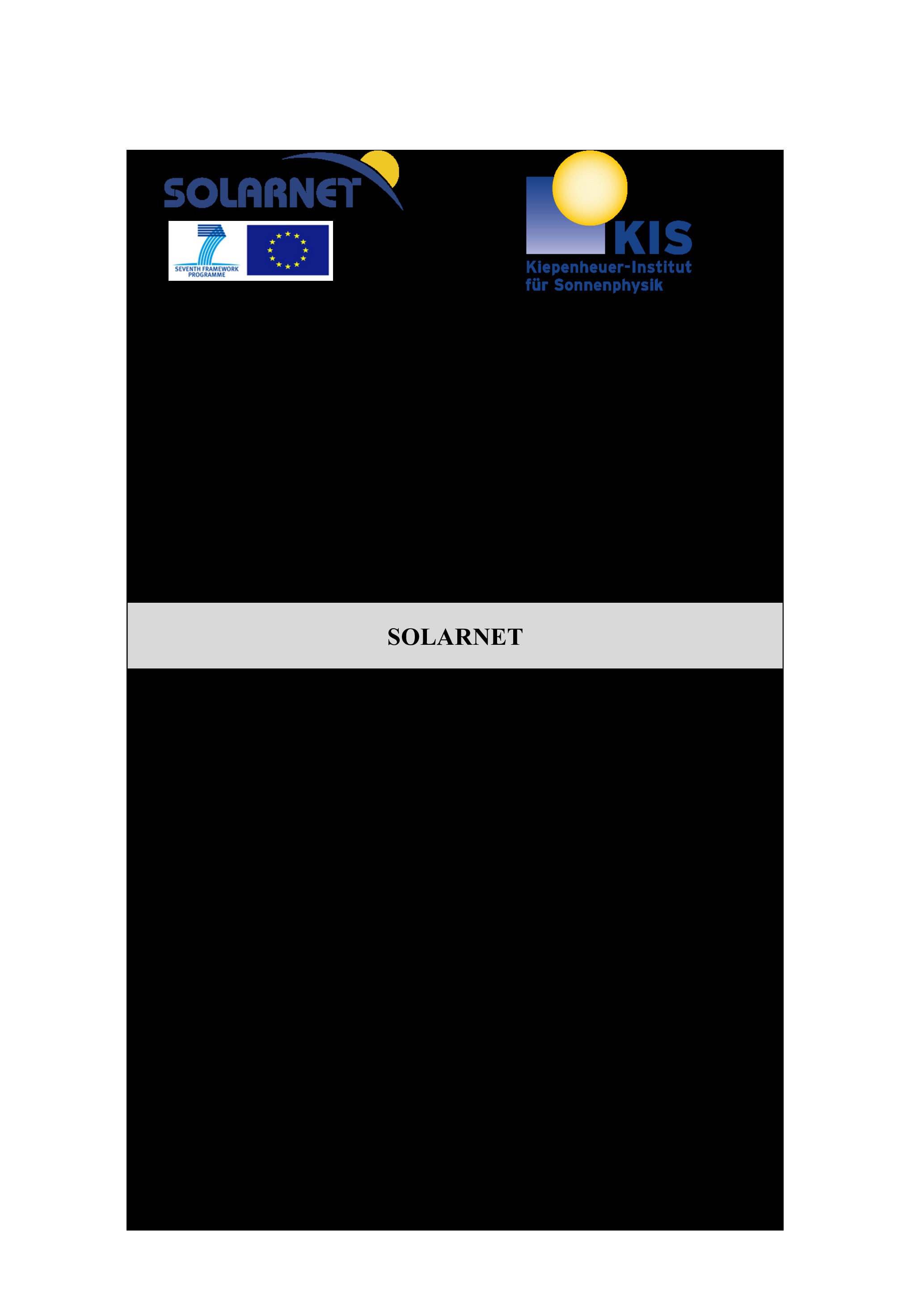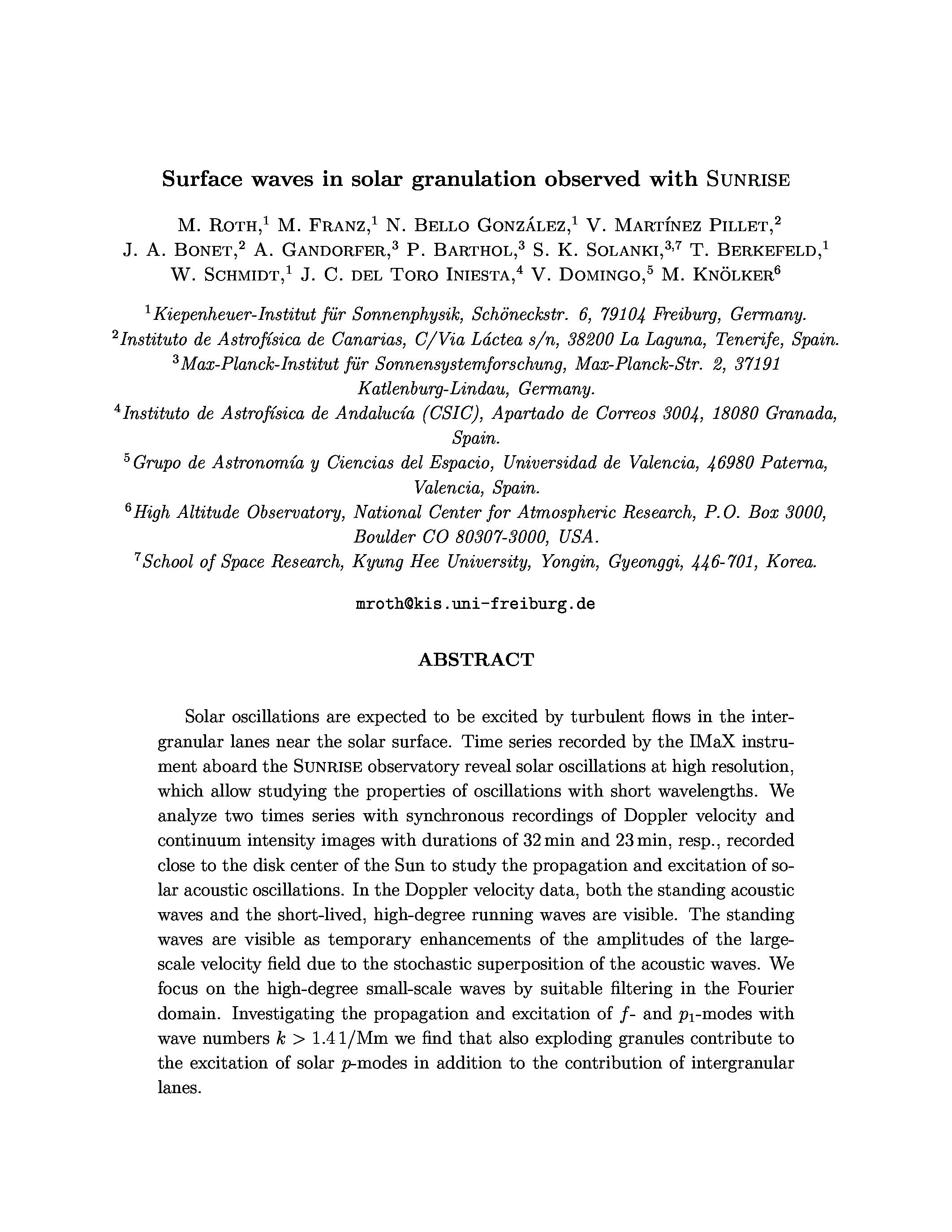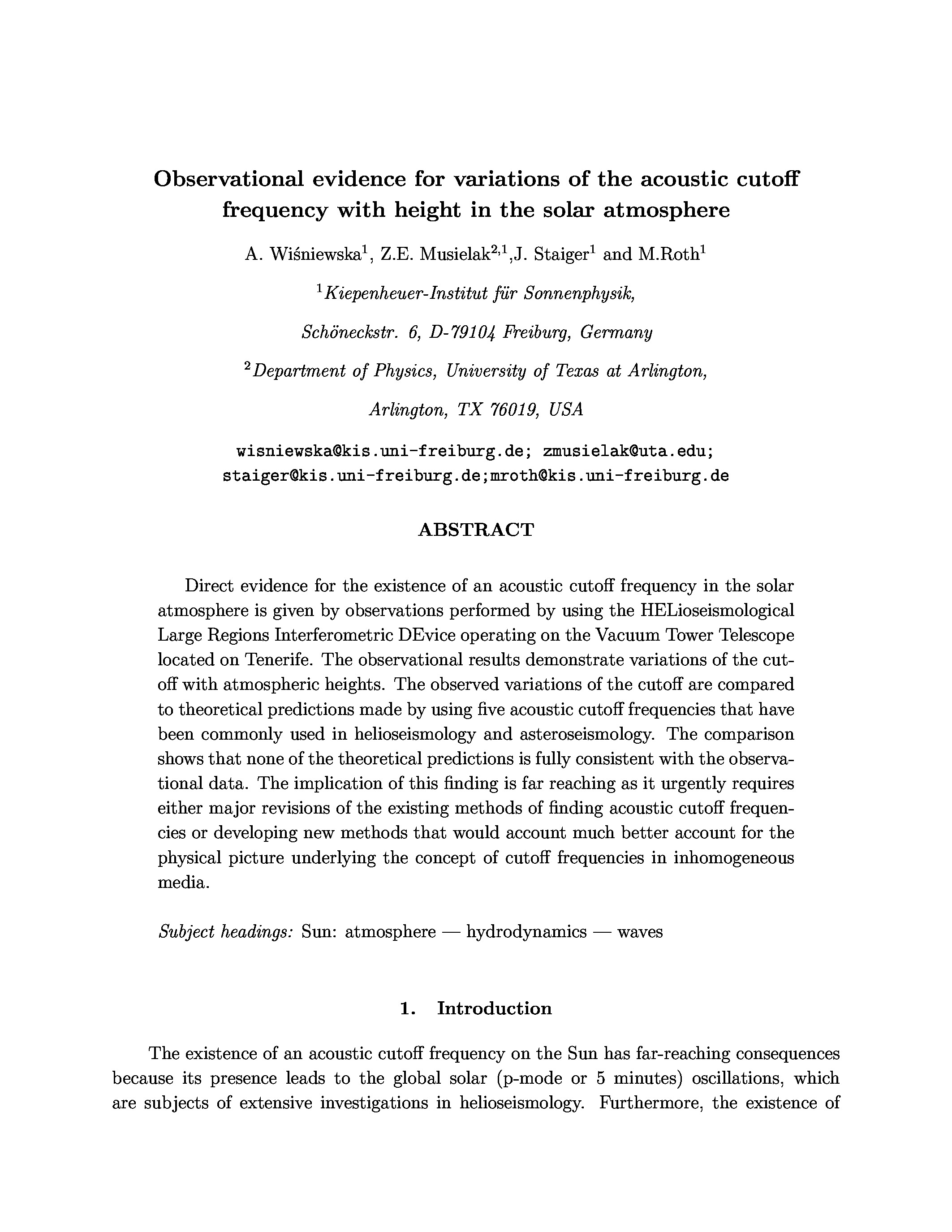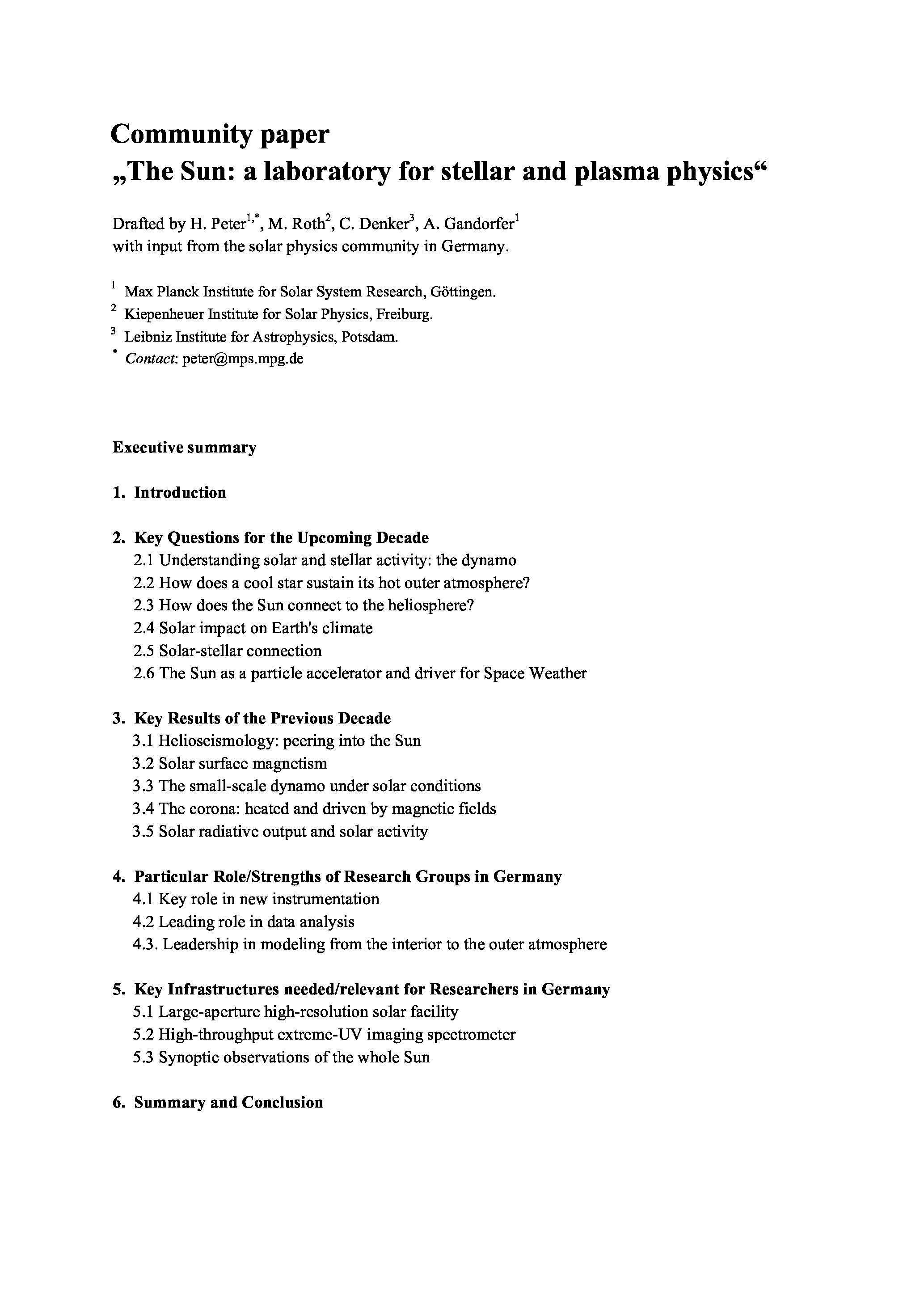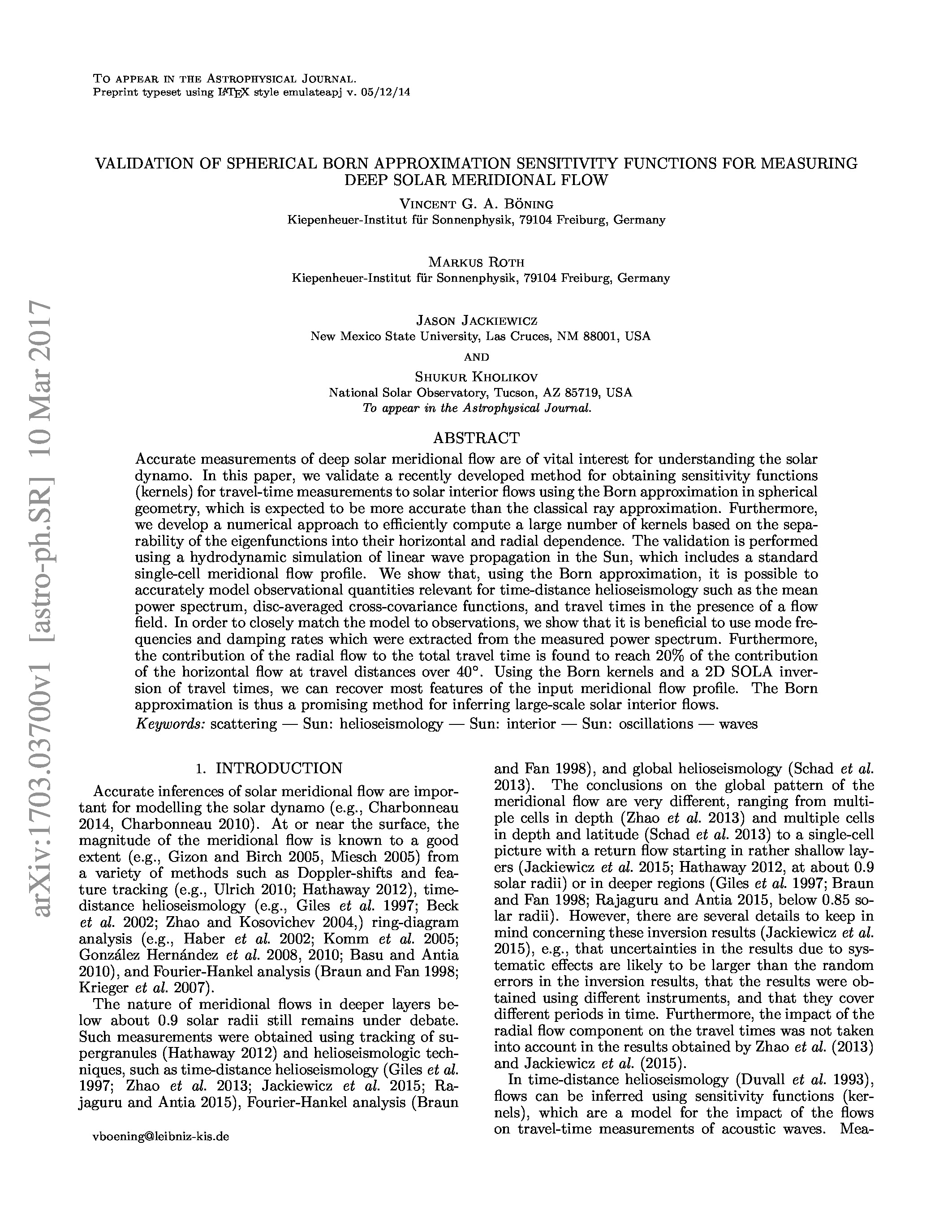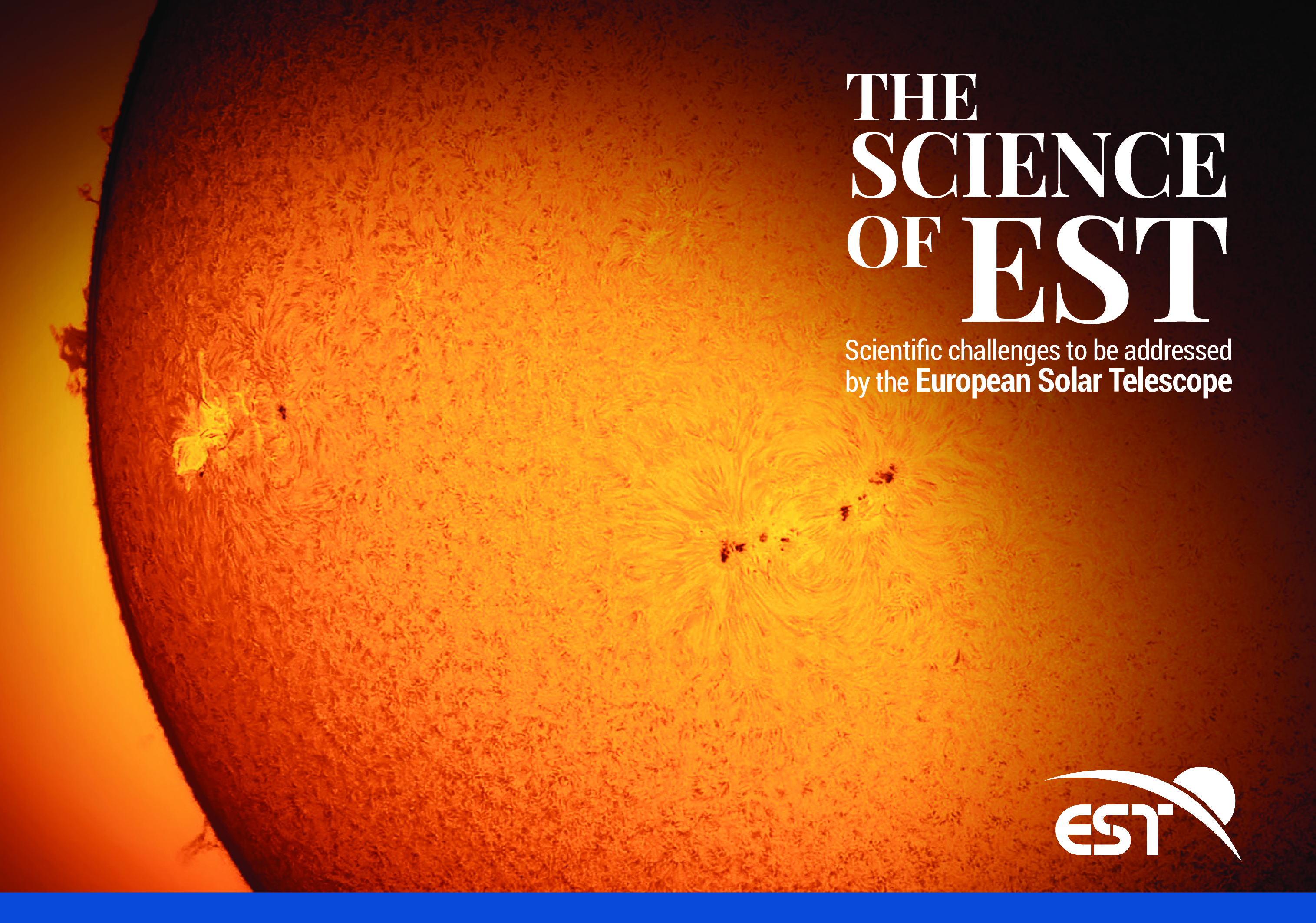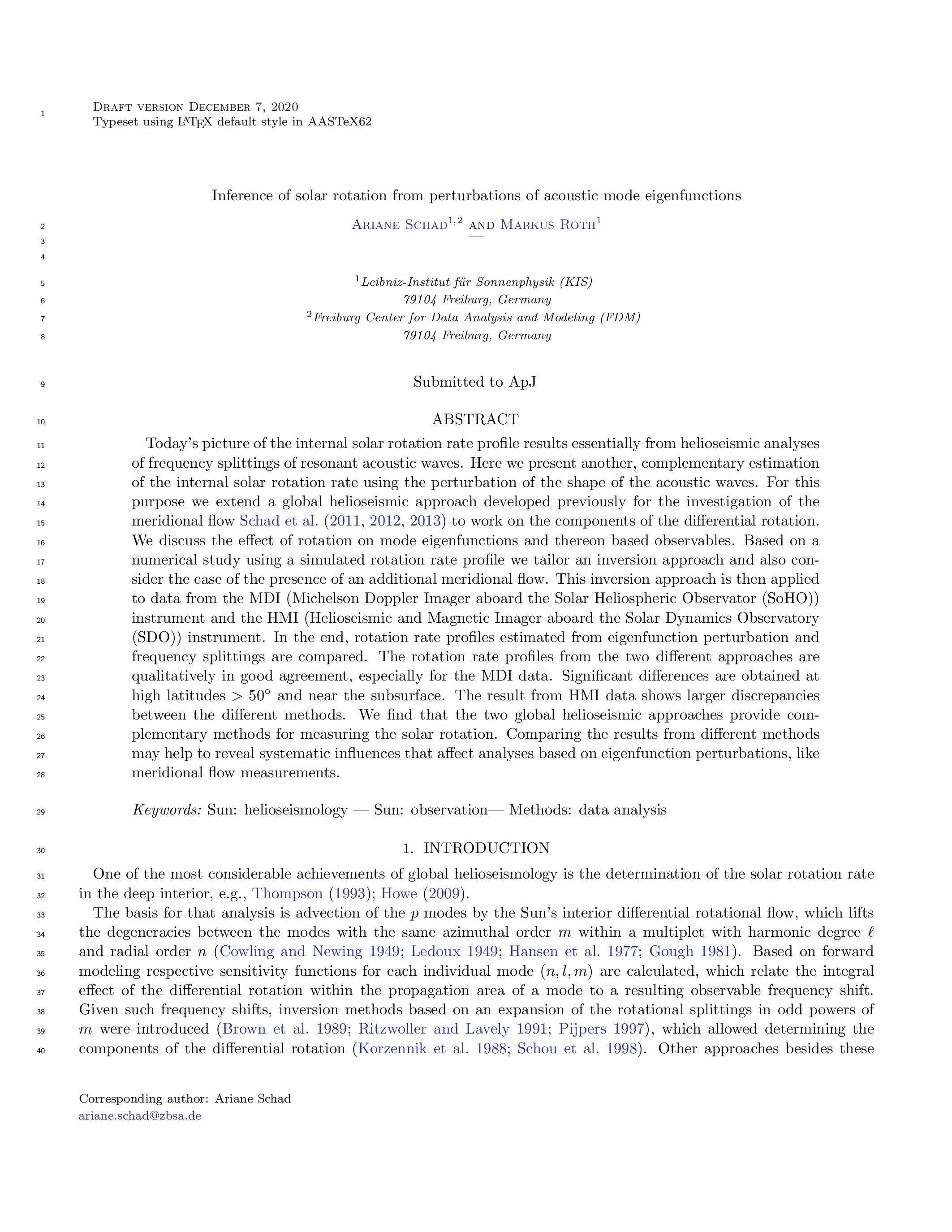Results were found under
videos, presentations, posters, papers .
There are no videos within this category so far.
There are no presentations within this category so far.
There are no posters within this category so far.
Astrophysics and Astrononmy
The Carina Nebula and Gum 31 molecular complex: I. Molecular gas distribution, column densities and dust temperatures
Natural Sciences (Astrophysics and Astrononmy)
Date of upload:
16.12.2015
Co-author:
David Rebolledo, Michael Burton, Anne Green, Catherine Braiding, Sergio Molinari, Graeme Wong, Rebecca Blackwell, Davide Elia and Eugenio Schisano
Abstract:
We report high resolution observations of the 12CO(1 → 0) and 13CO(1 → 0) molecular lines in the Carina Nebula and the Gum 31 region obtained with the 22-m Mopra telescope as part of the The Mopra Southern Galactic Plane CO Survey. We cover 8 deg2 from l = 285◦ to 290◦ , and from b = −1.5 ◦ to +0.5◦ . The molecular gas column density distributions from both tracers have a similar range of values. By fitting a grey-body function to the observed infrared spectral energy distribution from Herschel maps, we derive gas column densities and dust temperatures. The gas column density has values in the range from 6.3× 1020 to 1.4×1023 cm−2 , while the dust temperature has values in the range from 17 to 43 K. The gas column density derived from the dust emission is approximately described by a log-normal function for a limited range of column densities. A high-column density tail is clearly evident for the gas column density distribution, which appears to be a common feature in regions with active star formation. There are regional variations in the fraction of the mass recovered by the CO emission lines with respect to the total mass traced by the dust emission. These variations may be related to changes in the radiation field strength, variation of the atomic to molecular gas fraction across the observed region, differences in the
CO molecule abundance with respect to H2, and evolutionary stage differences of the molecular clouds that compose the Carina Nebula-Gum 31 complex.
Design, development and calibration of the GRAVITY acquisition camera software to monitor four telescope beams
Natural Sciences (Astrophysics and Astrononmy)
Date of upload:
21.10.2015
Co-author:
Paulo Garcia, Antonio Amorim, Paulo Gordo and GRAVITY consortium
Abstract:
We report the development of the GRAVITY acquisition camera software to monitor and analyse the four very large telescopes interferometer beams.
EXTENDED CARBON LINE EMISSION IN THE GALAXY: SEARCHING FOR DARK MOLECULAR GAS ALONG THE G328 SIGHTLINE
Natural Sciences (Astrophysics and Astrononmy)
Date of upload:
16.12.2015
Co-author:
Michael G. Burton, Michael C. B. Ashley, Catherine Braiding, Matthew Freeman, Craig Kulesa, Mark G. Wolfire, David J. Hollenbach, Gavin Rowell, and James Lau
Abstract:
We present spectral data cubes of the [CI] 809 GHz, 12CO 115 GHz, 13CO 110 GHz, and HI 1.4 GHz line emission from a ∼1 square degree region along the l = 328 (G328) sightline in the Galactic Plane. Emission arises principally from gas in three spiral arm crossings along the sightline. The distribution of emission in the CO and [CI] lines is found to be similar, with the [CI] slightly more extended, and both are enveloped in extensive HI. Spectral line ratios per voxel in the data cubes are found to be similar across the entire extent of the Galaxy. However, toward the edges of the molecular clouds the [CI]/13CO and 12CO/13CO line ratios rise by ∼50%, and the [CI]/HI ratio falls by ∼10%. We attribute this to these sightlines passing predominantly through the surfaces of photodissociation regions (PDRs), where the carbon is found mainly as C or C+, while the H2 is mostly molecular, and the proportion of atomic gas also increases. We undertake modeling of the PDR emission from low density molecular clouds excited by average interstellar radiation fields and cosmic-ray ionization to quantify this comparison, finding that depletion of sulfur and reduced PAH abundance is needed to match line fluxes and ratios. Roughly one-third of the molecular gas along the sightline is found to be associated with this surface region, where the carbon is largely not to be found in CO. Approximately 10% of the atomic hydrogen along the sightline is cold gas within PDRs.
VARIATION OF ACOUSTIC CUTOFF PERIOD WITH HEIGHT IN THE SOLAR ATMOSPHERE: THEORY VERSUS OBSRVETIONS
Natural Sciences (Astrophysics and Astrononmy)
Date of upload:
09.08.2016
Co-author:
K.Murawski, P.Konkol, Z.E.Musielak
Abstract:
Recently Wiśniewska et al. demonstrated observationally how the acoustic cutoff frequency varies with height in the solar atmosphere including the upper photosphere and the lower and middle chromosphere, and showed that the observational results cannot be accounted for by the existing theoretical formulas for the acoustic cutoff. In order to reproduce the observed variation of the cutoff with atmospheric height, numerical simulations of impulsively generated acoustic waves in the solar atmosphere are performed, and the spectral analysis of temporal wave profiles is used to compute numerically changes of the acoustic cutoff with height. Comparison of the numerical results with the observational data shows good agreement, which clearly indicates that the obtained results may be used to determine the structure of the background solar atmosphere.
A new cosmic coincidence in conjunction with the cosmic expansion.
Natural Sciences (Astrophysics and Astrononmy)
Date of upload:
14.04.2017
Abstract:
The discovery of the cosmic acceleration (Perlmutter & Riess, 1999; Perlmutter et al., 1999; Riess et al., 1998) along with the presence of dark matter is one of the most intriguing puzzles in modern physics and cosmology. Up to now, only 5% percent of the energy density in the universe can be explained by the physics that we know of. The other 95% are split up into 25% dark matter and 70% dark energy. For both energy densities there is still no reasonable physical explanation for their occurrence, only observational evidence.
Another vividly discussed topic is the requirement for the occurrence of life in our galaxy and in the universe. There are studies by von Bloh et al. (2003) and Franck et al. (2007) trying to investigate the early spreading of life, especially by panspermia effects, throughout the Milky Way galaxy. In order to derive their results, they determine the number of stellar systems containing habitable planets as a function of time.
Combining the results by Perlmutter & Riess (1999); Perlmutter et al. (1999), Riess et al. (1998) and von Bloh et al. (2003), Franck et al. (2007), there appears to be temporal correlation between the onset of cosmic acceleration and the formation of stellar systems containing habitable planets.The question is: is this just a mere coincidence, or is there a causal connection by a yet to be discovered physical mechanism?
SPRING - Final proposed instrument concept and operation plan
Natural Sciences (Astrophysics and Astrononmy)
Date of upload:
28.06.2017
Co-author:
Sanjay Gosain, Frank Hill, Joachim Staiger, Haosheng Lin, Wolfgang Zima, Dirk Soltau, Miroslav Klvana, Michal Sobotka
Abstract:
This document describes the technical concept developed under Solarnet WP80
“Synoptic Observations: Solar Physics Research Integrated Network Group
(SPRING)” for the setup of a new ground-based network for continuous solar
observations serving a large research community.
Surface waves in solar granulation observed with Sunrise
Natural Sciences (Astrophysics and Astrononmy)
Date of upload:
08.07.2016
Co-author:
M. Franz, N. Bello González, V. Martínez Pillet, J.A.Bonet, A. Gandorfer, P. Barthol, S. K. Solanki, T. Berkefeld, W. Schmidt, J. C. del Toro Iniesta, V. Domingo, M. Knölker
Abstract:
Solar oscillations are expected to be excited by turbulent flows in the intergranular lanes near the solar surface.
Time series recorded by the IMaX instrument aboard the {\sc Sunrise} observatory reveal solar oscillations at high resolution, which allow studying the properties of oscillations with short wavelengths.
We analyze two times series with synchronous recordings of Doppler velocity and continuum intensity images with durations of 32\thinspace min and 23\thinspace min, resp., recorded close to the disk center of the Sun to study the propagation and excitation of solar acoustic oscillations.
In the Doppler velocity data, both the standing acoustic waves and the short-lived, high-degree running waves are visible. The standing waves are visible as temporary enhancements of the amplitudes of the large-scale velocity field due to the stochastic superposition of the acoustic waves. We focus on the high-degree small-scale waves by suitable filtering in the Fourier domain.
Investigating the propagation and excitation of $f$- and $p_1$-modes with { wave numbers $k > 1.4$\thinspace 1/Mm} we find that also exploding granules contribute to the excitation of solar $p$-modes in addition to the contribution of intergranular lanes.
Observational evidence for variations of the acoustic cutoff frequency with height in the solar atmosphere
Natural Sciences (Astrophysics and Astrononmy)
Date of upload:
10.03.2016
Co-author:
Z.E.Musielak, J.Staiger, M.Roth
Abstract:
Direct evidence for the existence of an acoustic cuto� frequency in the solar
atmosphere is given by observations performed by using the HELioseismological
Large Regions Interferometric DEvice operating on the Vacuum Tower Telescope
located on Tenerife. The observational results demonstrate variations of the cuto
� with atmospheric heights. The observed variations of the cuto� are compared
to theoretical predictions made by using �ve acoustic cuto� frequencies that have
been commonly used in helioseismology and asteroseismology. The comparison
shows that none of the theoretical predictions is fully consistent with the observational
data. The implication of this �nding is far reaching as it urgently requires
either major revisions of the existing methods of �nding acoustic cuto� frequencies
or developing new methods that would account much better account for the
physical picture underlying the concept of cuto� frequencies in inhomogeneous
media.
The Sun: a laboratory for stellar and plasma physics
Natural Sciences (Astrophysics and Astrononmy)
Date of upload:
27.03.2019
Abstract:
Community paper as part of the Denkschrift 2017 - Perspektiven der Astrophysik in Deutschland 2017 - 2030
Validation of Spherical Born Approximation Sensitivity Functions for Measuring Deep Solar Meridional Flow
Natural Sciences (Astrophysics and Astrononmy)
Date of upload:
14.03.2017
Co-author:
Vincent G.A. Böning, Markus Roth, Jason Jackiewicz, Shukur Kholikov
Abstract:
Accurate measurements of deep solar meridional flow are of vital interest for understanding the solar dynamo. In this paper, we validate a recently developed method for obtaining sensitivity functions (kernels) for travel-time measurements to solar interior flows using the Born approximation in spherical geometry, which is expected to be more accurate than the classical ray approximation. Furthermore, we develop a numerical approach to efficiently compute a large number of kernels based on the separability of the eigenfunctions into their horizontal and radial dependence. The validation is performed using a hydrodynamic simulation of linear wave propagation in the Sun, which includes a standard single-cell meridional flow profile. We show that, using the Born approximation, it is possible to accurately model observational quantities relevant for time-distance helioseismology such as the mean power spectrum, disc-averaged cross-covariance functions, and travel times in the presence of a flow field. In order to closely match the model to observations, we show that it is beneficial to use mode frequencies and damping rates which were extracted from the measured power spectrum. Furthermore, the contribution of the radial flow to the total travel time is found to reach 20% of the contribution of the horizontal flow at travel distances over 40^\circ. Using the Born kernels and a 2D SOLA inversion of travel times, we can recover most features of the input meridional flow profile. The Born approximation is thus a promising method for inferring large-scale solar interior flows.
The Science of EST
Natural Sciences (Astrophysics and Astrononmy)
SOLARNET - High Resolution Solar Physics Network
Date of upload:
09.06.2020
Inference of Solar Rotation from Perturbations of Acoustic Mode Eigenfunctions
Natural Sciences (Astrophysics and Astrononmy)
Date of upload:
07.12.2020
